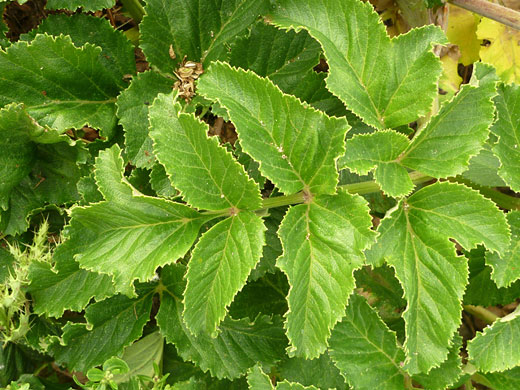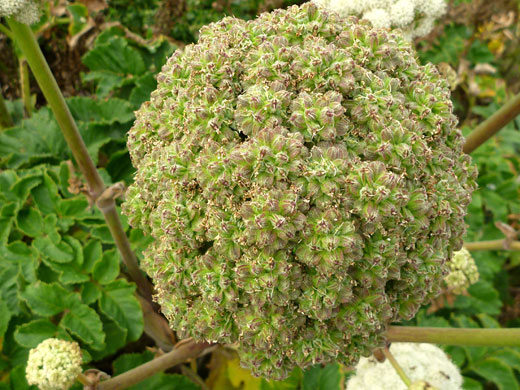Common names:
Seacoast angelica, sea-watch
Family:
Scientific name:
Angelica lucida
Main flower color:
Range:
Coastal areas of Washington, Oregon and far north California
Height:
Up to 5 feet
Habitat:
Beside the coast; dunes, beaches, bluffs
Leaves:
Divided 2 or 3 times into opposite, ovate or lanceolate leaflets
Season:
May to August
Angelica lucida has the same divided, toothed leaflets that occur for most members of this genus, but can be distinguished by the small, leafy bractlets at the base of its compound inflorescence; the majority of other species have no such bractlets. Plants grow in coastal areas between north California and Alaska, at elevations no higher than 150 feet. Leaflets have fine or coarse teeth along the edges, and are green and hairless on both surfaces. Leaf tips are somewhat pointed. The lower end of the leaf petiole is sheathed, where it meets the main stalk.
The compound umbel is formed of between 20 and 45 rays (between 1 and 3 inches long), each terminating in a compact cluster of small white or pale yellow flowers. When mature, these tend to merge with adjacent clusters to give the appearance of a single spherical inflorescence 6 inches or more in diameter.
The compound umbel is formed of between 20 and 45 rays (between 1 and 3 inches long), each terminating in a compact cluster of small white or pale yellow flowers. When mature, these tend to merge with adjacent clusters to give the appearance of a single spherical inflorescence 6 inches or more in diameter.
All Contents © Copyright The American Southwest | Comments and Questions | Contribute | Site Map



